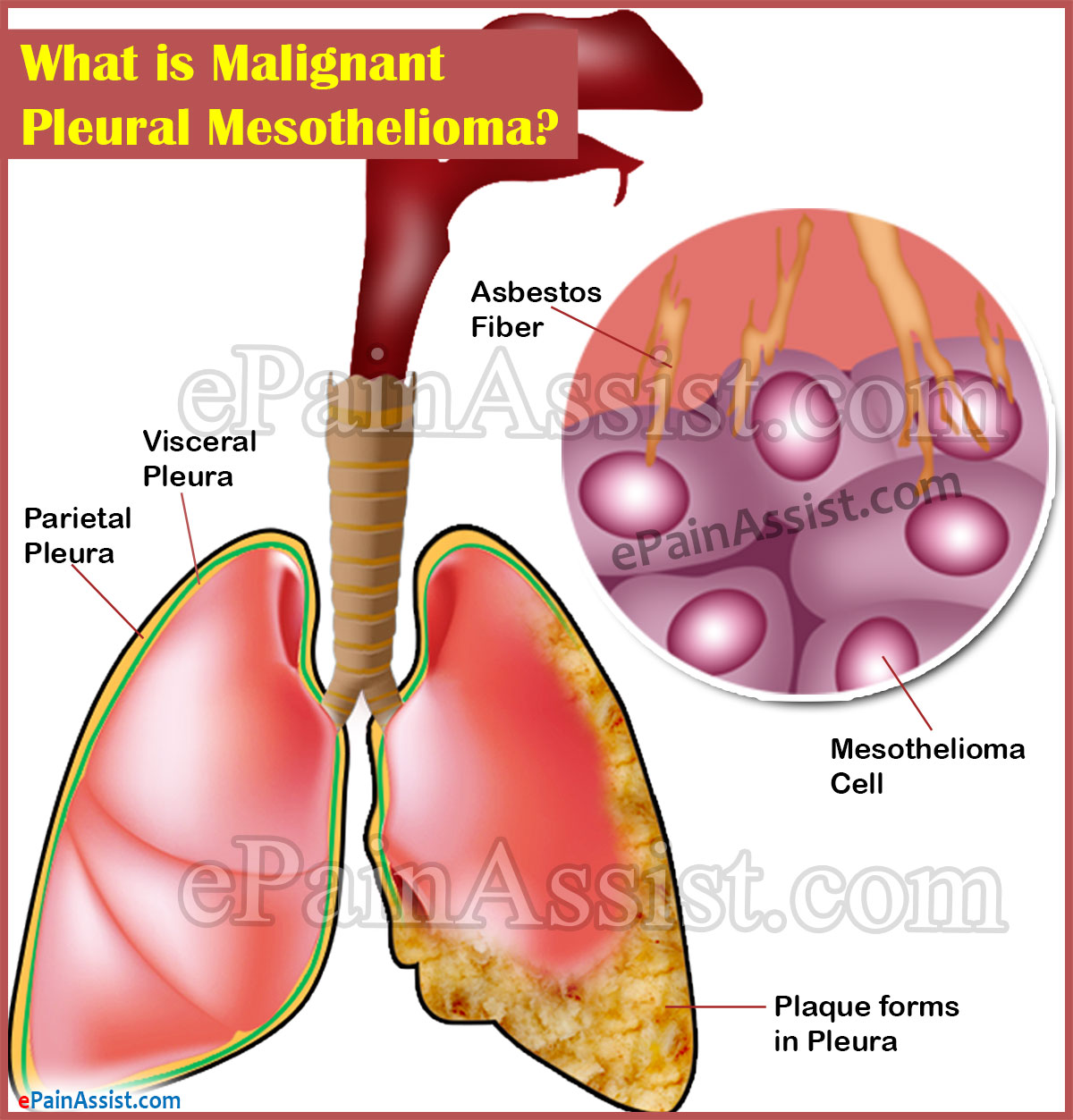What is Malignant Pleural Mesothelioma?
Malignant pleural mesothelioma is an uncommon cancer often identified in individuals who have been open to the elements like high asbestos quantity. The malignancy distresses the pleura, a fine film of lubricating cells which position on the human chest wall and lungs. It normally takes 10 years or further for changes to develop that are symptomatic of pleural disorder, and yet longer for signs to be apparent. These dissimilarities can comprise a calcification or congealing of the pleural coating, a condition usually identified as pleural plaques. Situations like the growth of pleural plaques or pleural calcification frequently serve as originator to malignant mesothelioma.

In several cases, pleural disease is not regarded as serious but it can trigger reduced lung performance and may verify that an individual has continued considerable asbestos contact. Patients identified with pleural situations are normally believed to be at an advanced risk for raising the more serious malignant pleural mesothelioma.
Malignant pleural mesothelioma invents in the pleura although can quickly extend to the external chest wall, heart and abdomen. Malignant pleural mesothelioma is usually significant in one year of identification. However, comprehending and acknowledging key risk issue, like asbestos contact, will usually lead to premature discovery of the malignancy. Those who are in luck to receive a sooner diagnosis are possible to be more suitable for life-sustaining medications like surgical re-segment of the cancer. This form of medication can expand an affected individual’s life years further than that of a normal malignant mesothelioma affected individual.
While there is no cure for malignant pleural mesothelioma, medication options do present for malignant pleural mesothelioma. There are ways for individuals to manage the sickness through management of tumor including conventional radiation and chemotherapy techniques. These techniques can lessen symptoms of the illness and make the individual more comfortable. In individuals where recognition is done of premature stage of sickness, malignant pleural mesothelioma surgery can broaden the survival speed far beyond preceding levels in untreated sickness.
Causes of Malignant Pleural Mesothelioma
The major cause of malignant pleural mesothelioma is long term & continuous exposure to asbestos. Malignant pleural mesothelioma is recognized to be triggered by contacting to asbestos. This asbestos is a microscopic substance that was utilized for several years in several different industrial complexes. Asbestos fibers are enormously durable, but also really difficult to eject from the body when presented to the inside tissue of humans.
Upon breathing, asbestos fibers will stay on the lung tissue’s outer coatings and inside the pleura, a lean film of mesothelial cells that lines the chest cavity.
The pleural lining permits for the free expansion and contraction of the body parts such as lungs, heart, stomach/abdomen by providing a special lubrication on the top of these parts. The pleura, alike to additional mesothelial membranes, are fragile structures and minute asbestos fibers can result pleural plates to structure on its face. Pleural plates may eventually grow into malignant pleural mesothelioma cancer cells. Usually it takes several years from asbestos contact and the growth of adverse health problems, as the asbestos treads will gradually irritate and trouble the inner tissue over time awaiting for symptoms appear.
Signs and Symptoms of Malignant Pleural Mesothelioma
Signs and symptoms of malignant pleural mesothelioma comprise of constant dry or rough cough, passing blood when coughing (hemoptysis), shortness of inhalation (dyspnea), and problems swallowing (dysphagia). There are four phases of malignant pleural mesothelioma that specialist doctors use to illustrate how far the malignancy has developed. For many people, unluckily, the signs and symptoms are not obvious until the malignancy is in a very late phase of stage 3 or 4.
Asbestos fibers can result excess liquid to build up connecting the two coatings of pleura, a situation called pleural discharge/effusion. While a modest fluid within your pleural gap is vital, too much can cause breathing troubles. The extra solution puts force on the lungs, resulting chest pain that becomes bad when you take deep breaths or cough.
Tumor difficulties are largely accountable for signs and symptoms of malignant pleural mesothelioma, which possibly will comprise:
- Persistent raspy or dry cough is a symptom of malignant pleural mesothelioma.
- Fatigue, unexplained weight loss is another symptom of malignant pleural mesothelioma.
- Night sweats and fever, trouble with swallowing (dysphagia) are also the signs of malignant pleural mesothelioma.
- Painful breathing
- Lumps beneath the skin resting on the chest
- Ache in the rib area or lower back
- Shortness of breath (or dyspnea) and coughing up blood (or hemoptysis) is a good indication of malignant pleural mesothelioma.
In their first appointment with a specialist, a large number of malignant pleural mesothelioma patients complain chest pain and breathing shortness. Patients seldom mention weight deficit and weakness during their first doctor visit for malignant pleural mesothelioma; however these signs may exist if the disease is in a serious phase of malignant pleural mesothelioma.
Also Read:
